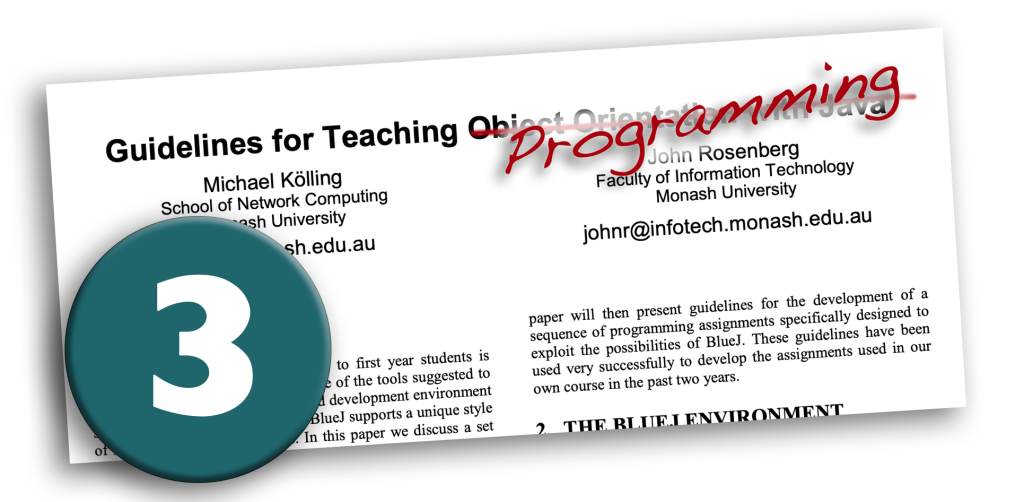
The third guideline of teaching programming is to read code, lots of it, and early.
I have already talked about this in Guideline 2, which was about not starting with a blank screen. While Guideline 2 was aimed primarily at avoiding the empty-screen paralysis (and discussed code reading as a side issue), this one is explicitly about the importance of code reading as a skill, and not limited to the first example.
Many programming courses concentrate solely on code writing, and assume that – somehow – code reading will follow. Either it is assumed that this is an easy skill that exists automatically, or that it is acquired by osmosis somehow. More often teachers do not think about this much at all.
Code reading is, in fact, a valuable and separate skill that should be practiced. And it should be practiced early, since it is of great value to learning to write code.
For the first few projects (spanning weeks, if not months), start each project by handing out to students a partial, half written application, and make the goal to fix/complete/extend. In this way, the first task required is to read and understand the existing code, before working out what to extend and write. Discuss and require code reading explicitly.
A large amount of peripheral learning happens when reading well written code. We get benefits from an apprenticeship approach, where learners can copy the master’s practices at many levels, and learn by example.
This approach is also much more realistic as preparation for actual work: No new programmer joining a software company will, as their first task, be asked to write a new system from scratch. It is always the reading and extending of existing software.
Of course, this requires teachers to show students code that is worth reading, that embodies good practice, from which also techniques can be gleaned that are not the current focus of discussion. It requires teachers to use a significant number of well-written examples that exemplify good practice. Not all teachers will always be able to write such examples, but resources can be shared. Look for resources that support this approach.
